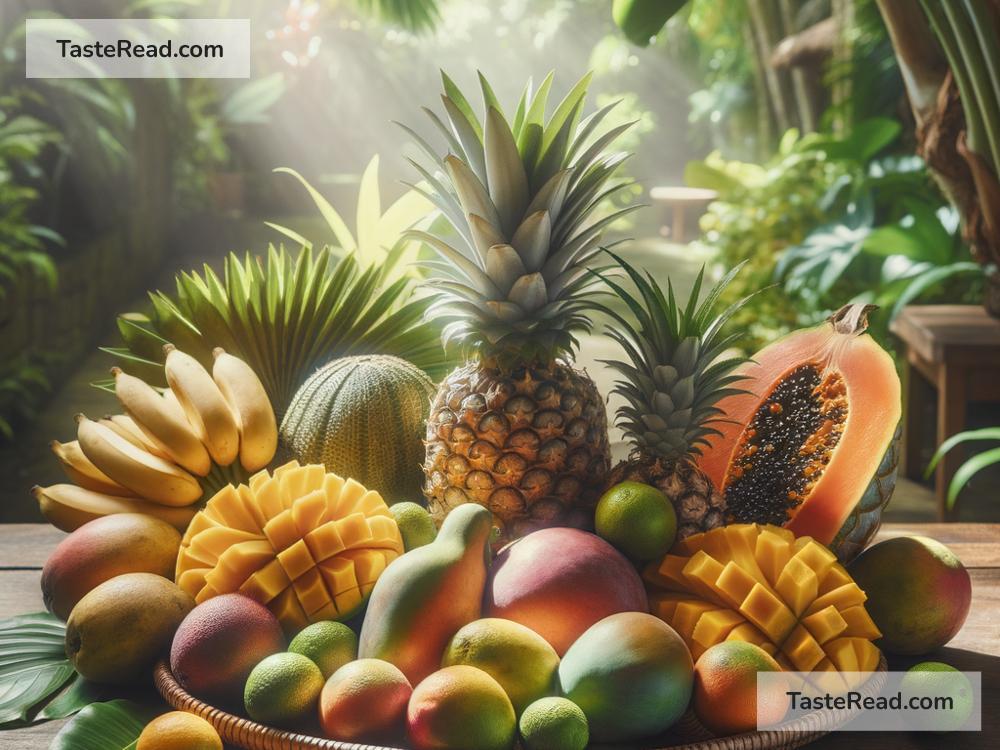Why Tropical Fruits Are Sweeter Than Temperate Ones
Have you ever noticed how tropical fruits like mangoes, pineapples, and bananas often taste sweeter than temperate fruits like apples, cherries, and pears? Whether you’re enjoying a juicy slice of watermelon from the tropics or biting into a crisp apple from a cooler region, there’s always a noticeable difference in sweetness. But why is that? Let’s dive into the fascinating science behind this difference in taste, explained in simple terms.
What Are Tropical Fruits and Temperate Fruits?
Before we look at the sweetness, let’s quickly define these two types of fruits. Tropical fruits grow in warm regions near the equator. These areas include countries like Thailand, India, Brazil, and the Philippines, where the climate tends to be hot, humid, and stable year-round. Popular tropical fruits include mangoes, pineapples, bananas, guavas, and papayas.
Temperate fruits, on the other hand, grow in cooler climates with distinct seasons — spring, summer, autumn, and winter. These regions include Europe, North America, and parts of Australia. Some common temperate fruits are apples, cherries, pears, strawberries, and blueberries.
Why Are Tropical Fruits Sweeter?
The sweetness of fruits comes from the sugars they produce as they grow and ripen. Tropical fruits tend to have higher sugar content than temperate fruits, and there are several reasons why.
1. Year-Round Warm Weather
In tropical regions, the climate is warm and stable throughout the year. This consistency is perfect for fruit plants because they can grow and produce sugars without interruptions caused by cold weather. Warm temperatures speed up the process of photosynthesis, which is how plants convert sunlight into energy and ultimately produce sugars. The more sugars a fruit accumulates during its growth, the sweeter it becomes.
On the other hand, in temperate regions, the climate changes throughout the year, with cold winters and mild summers. Plants in these areas often have shorter growing seasons and lower year-round sunlight exposure, which results in less sugar production. Because of this, temperate fruits tend to be less sweet.
2. Higher Need for Attraction
Sweetness also helps fruits attract animals like birds and mammals, which spread the fruit’s seeds and help the plant reproduce. In tropical regions, there’s stiff competition among plants to get the attention of seed-dispersing animals. Bright colors and sugary-sweet flavors are evolutionary strategies that tropical fruits use to stand out and entice wildlife. The sweeter the fruit, the more likely an animal will eat it, carry its seeds, and help the plant reproduce.
Temperate fruits face less biodiversity competition because temperate regions often have fewer fruit-bearing plants at certain times of the year, especially during winter. As a result, temperate fruits may not need to be as sweet to attract animals.
3. Ripening in Warmer Conditions
Tropical fruits often ripen on the plant under warm conditions, where sugar production peaks easily. For example, mangoes hanging in the hot sun on a tree continue to develop their sweetness until they’re ready to eat. This natural ripening process creates fruits that are rich in sugars and full of flavor.
In contrast, temperate fruits often ripen in cooler conditions or are harvested prematurely to prevent bruising during transport. Apples, for instance, might be picked before they fully ripen and develop all their natural sugars. Once harvested, they can ripen further, but the sweetness level often remains lower than that of tropical fruits.
4. Different Types of Sugars
Another reason tropical fruits taste sweeter is the type of sugars they contain. Fruits generally produce three main kinds of sugar: glucose, fructose, and sucrose. Tropical fruits often have higher amounts of fructose, which is the sweetest of the three sugars. Fructose creates the delicious, candy-like sweetness you find in fruits like bananas and pineapples.
Temperate fruits may contain higher amounts of glucose or sucrose, which are less sweet than fructose. While temperate fruits can still be sweet, their flavor is often more balanced, combining sweetness with tartness or acidity — think of the sweet-but-sour taste of an apple.
The Role of Acidity
The sweetness of a fruit isn’t just about the amount of sugar; it’s also influenced by how acidic the fruit is. Acidity adds a tangy taste that can balance or mask sweetness. Tropical fruits usually have low acidity, allowing their natural sugars to stand out. Mangoes, for example, are sweet with just a touch of tartness, while bananas are almost entirely sweet.
Temperate fruits, however, often have more acidity, which balances their lower sugar content. This is why fruits like berries and apples can taste tangy or sour even though they contain sugar.
Are There Exceptions?
Of course, not every tropical fruit is sweeter than every temperate fruit. Some tropical fruits, like passion fruit, are quite tart, while some temperate fruits, like certain varieties of grapes and peaches, can be very sweet. The sweetness of individual fruits depends on the variety, growing conditions, and ripeness.
Final Thoughts
Tropical fruits are sweeter than temperate fruits due to the combination of warm climates, longer growing seasons, and evolutionary strategies to attract animals. Their natural sugars thrive in the sunshine, creating a delightful, dessert-like eating experience. Meanwhile, temperate fruits offer a more balanced taste with hints of tartness, perfect for pies and jams or as a refreshing snack.
So the next time you bite into a juicy mango or crunch into an apple, you’ll know why they taste so different — and why tropical fruits bring a little extra sweetness to your plate!


